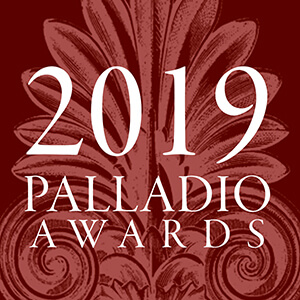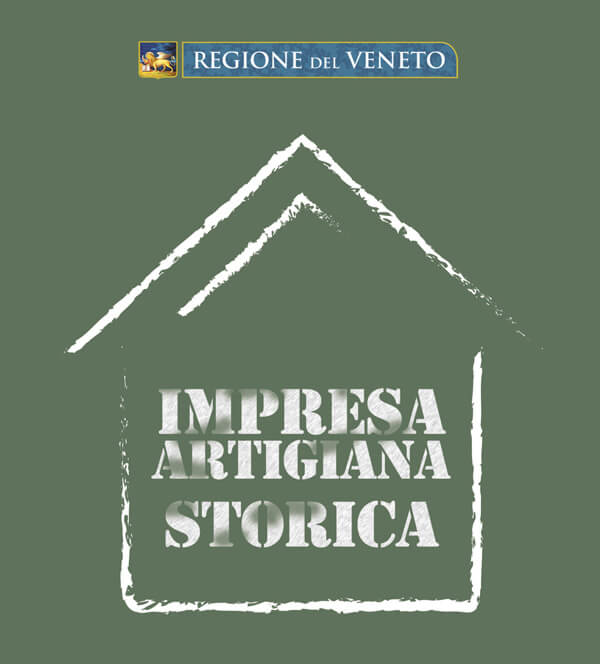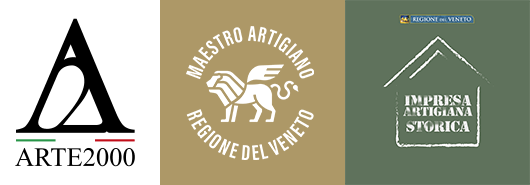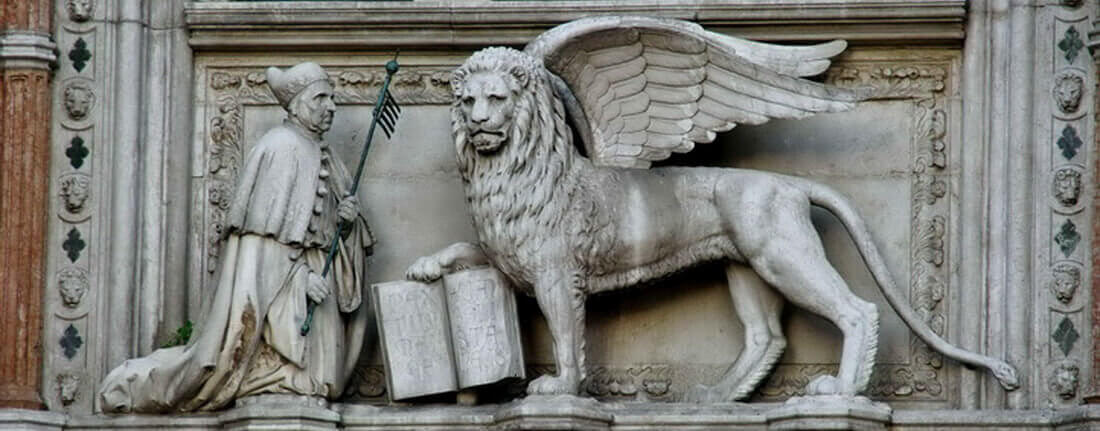
Venice adorned by ancient and sibylline stone lions
The Venetians filled the city with the stone lions sculptures. There are various models: whole-body, only the head, some represent Saint Mark and others are generic.
An ancient legend tells that Pantalone, the Venetian mask, took the name from the Venetian merchants called plants lions because they hoisted the flag with the lion every time they were going in a new territory.
Many of the actual statues are reproductions, unfortunately during the Napoleonic invasion that sanctioned the end of the Serenissima, a lot of chisels were paid to destroy the sculptures and to eliminate every symbol of the Venetian Republic.
Famous monuments with interesting and important lions sculptures
Palazzo Ducale: Scala dei Giganti
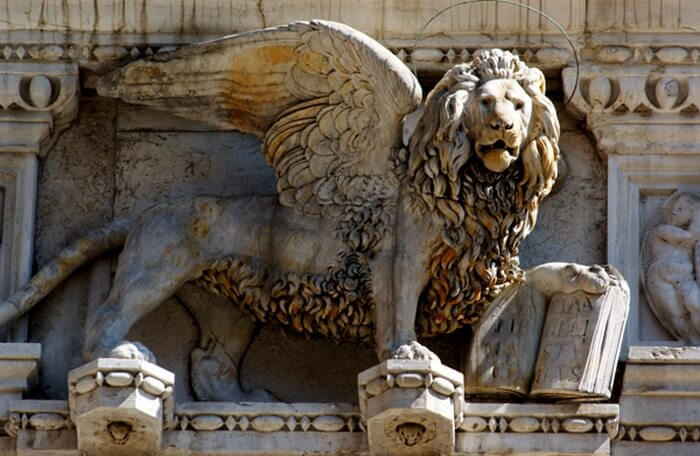
A winged lion, realized in 1870, is positioned at the top of the staircase to dominate the two huge statues of Marte and Nettuno, divinity of the earth and sea. It demonstrated the power and the dominion of the Serenissima on land and sea.
Palazzo Ducale: Porta della Carta
Above the magnificent and monumental entrance of the palace, completely realized in inlaid marble, there is the famous sculpture of Doge Foscari kneeling in front of Saint Mark’s Lion. It represents the devotion for the Evangelist protector. It was destroyed during the French invasion; the actual one is a reproduction.
Torre dell’orologio
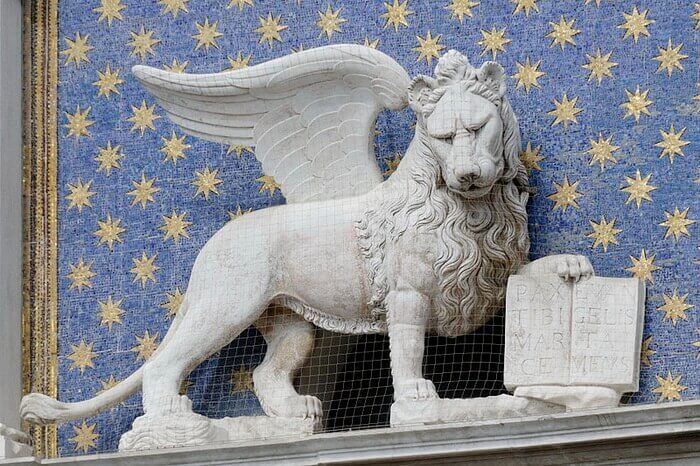
On the upper part of the facade there is a huge Marciano Lion, symbol of the Serenissima, standing on his four legs. The tower is a Renaissance building situated near the Basilica of Saint Mark.
Piazzetta dei Leoncini
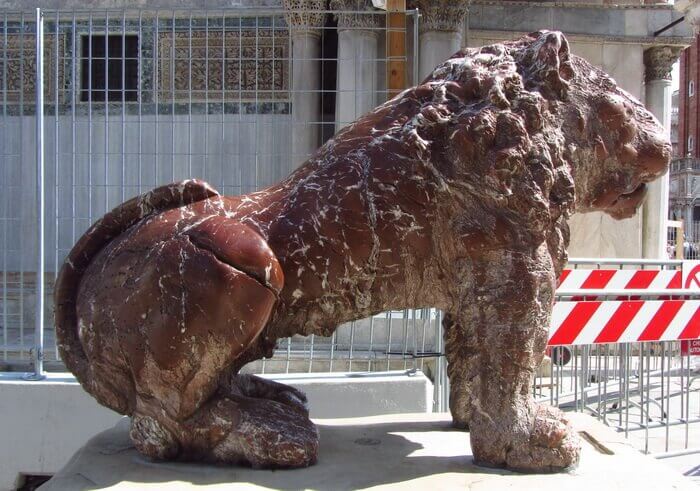
Two sculptures of crouched lions, called “leoncini”, give the name to the square. They have been realized in 1722 in red Cottanello marble, a town in the province of Rieti.
Palazzo Marcello dei Leoni
Two Romanesque high relief lions, realized in Pietra d’Istria, are present on the sides of the entrance. They are represented while fighting and lacerating snakes and dragons. The palace is an ancient building with a strategic role in the past; probably it took the name from these medieval sculptures, perhaps from San Tomà church.
Museo Civico Correr
It is the most ancient lion in moeca, sculpted on a stone patera that is an ornamental bas relief. According to the used style, it was probably realized during the XIII century. Since 1967 it was walled up the entrance of the Sant’Aponal bell tower. Now it is guarded in the museum.
Chiesa di San Polo
In front of the bell tower there are two Romanesque slumped over lions realized in Pietra of Aurisina, one has a snake round the neck and the other one has a human head between the legs. They are column-bearing, so it is thought that they had a different position in the past. Being very ancient, with recurring symbols in art history, the legend has interpreted them in different way.
Giardini di Castello
In the gardens there is a sculpture of a lion ridden by Minerva. It fuses together the symbol of Venice, wanted by the Venetians, and Minerva that is the goddess of wisdom and protector of the arts wanted by the Austrians. It has been realized in 1830 to decorate the Gallerie dell’Accademia, but in 1938 it has been removed and abandoned between the bushes.
There are a lot of other lions along the calli and Venetian fields, we have described only some of them. A great part of the lions have been realized with the famous Pietra d’Istria and transported by sea with the ships. Among the various representations there are also the decorative leoncini for the balconies and the ornamental masks as the keystones or the famous Mouths of the Secret Complaints (Bocche delle Denunce Segrete); an interesting and fascinating subject we will talk about in another article.
This article contains general information. For questions and curiosities leave a comment below. If you wish to be contacted, please fill out the form.
